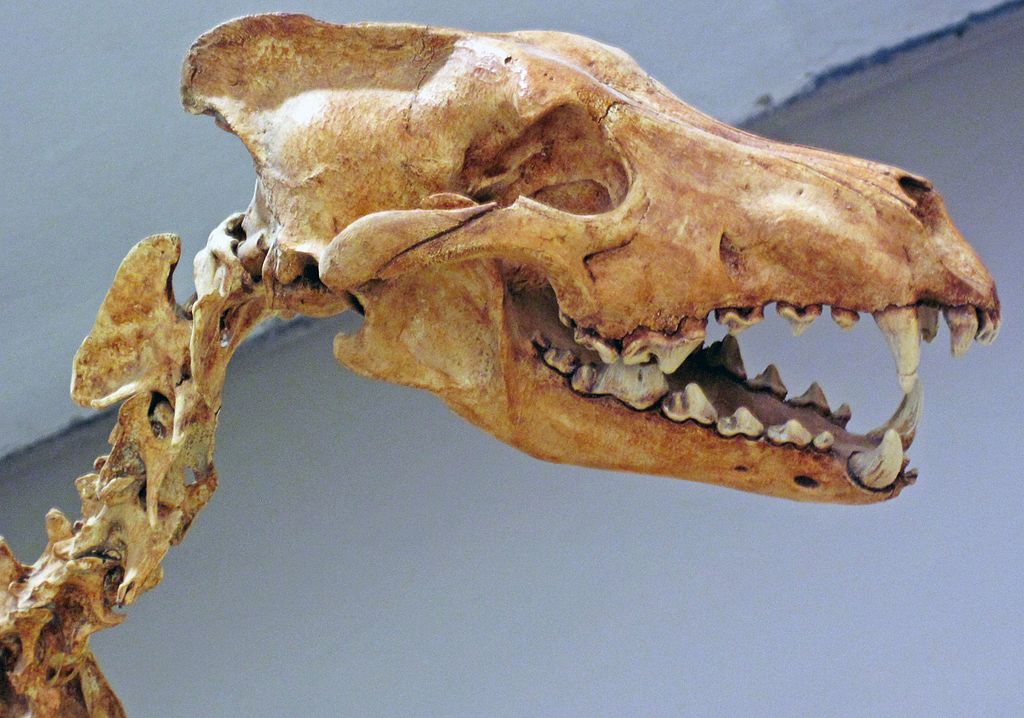Canis dirus skull and neck
From museum signage: "Dire wolves are closely related to the modern gray wolf. Their fossils have been found in great numbers in the tar pit deposits of California. The wolves were attracted to other animals trapped in the tar, and became trapped themselves.
Dire wolves were widespread across North America during the Ice Age. They lived and hunted in packs like their modern cousins."
"Extreme Pack Hunting
The dire wolf (Canis dirus) evolved in North America, alongside the coyote (Canis latrans), and ranged from Alaska to Florida. The gray wolf (Canis lupus) migrated to North America from Asia some 200,000 years ago and subsequently coexisted with the dire wolf. The dire wolf and gray wolf are very similar in height and length, but the dire wolf was stockier with a broader head and larger teeth, and had shorter sturdier legs.
Dire wolves may have hunted in large packs of 30 or more individuals, which is different from modern gray wolves that generally live in smaller packs of 5-10 individuals. Large pack size means dire wolves were mostly hunting large prey, and these large packs made them extremely successful predators during the Pleistocene. An example of their success can be seen in the La Brea tar pits in California where dire wolf skeletons outnumber gray wolf skeletons by nearly 200 to 1.
The dire wolf had a diet dominated by bison and horse, but excluding elk, deer, and smaller prey. Soon after the extinction of horses, mammoths, and several bison species, the dire wolf also went extinct. On the other hand, modern gray wolf diet includes a broad range of prey including medium to large mammals such as deer, elk, muskox, carivou, and bison, as well as smaller prey such as hares, badgers, foxes, rodents, and waterfowl. Shortly following the dire wolf extinction, the domestication of gray wolves by humans began. "
Classification: Animalia, Chordata, Vertebrata, Mammalia, Carnivora, Canidae
See info. at:
en.wikipedia.org/wiki/Dire_wolfWięcej informacji o licencji można znaleźć tutaj. Ostatnia aktualizacja: Thu, 24 Nov 2022 18:54:56 GMT
